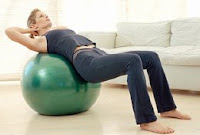Spine J. 2009 May 29; Agarwal V, Wildstein M, Tillman JB, Pelkey WL, Alamin TFBACKGROUND CONTEXT: Interspinous process devices represent an emerging treatment for neurogenic intermittent claudication resulting from lumbar spinal stenosis. Most published descriptions of the operative technique involve treatment of patients in the modified lateral decubitus knee-chest position (modified lateral decubitus), and yet many surgeons have begun to perform the procedure in various prone positions. The patient's positioning on the operating room table seems likely to influence resting interspinous distance, and thus implant sizing and possibly the risk of intraoperative spinous process fracture. The intersegmental lumbar effect of variants on operative prone positioning compared with the modified lateral decubitus position has not been studied. PURPOSE: We performed this study to determine the comparative differences in interspinous distance and intersegmental angulation effected by the lateral decubitus knee-chest position and the variants on prone positioning used in practice. STUDY DESIGN/SETTING: Experimental human radiographic study. PATIENT SAMPLE: Twenty healthy male volunteers with a mean age of 43.6+/-10.8 years (range, 24-63), without chronic back pain, symptoms of neurogenic claudication, or history of lumbar surgery were enrolled. OUTCOME MEASURES: Interspinous distance, anterior and posterior disc heights, disc angulation were measured on PACS monitor. METHODS: Lateral X-rays were taken of the lower lumbar spine in each of four different surgical positions (modified lateral decubitus, Andrews frame, Wilson frame, and Jackson frame). Statistical analysis was performed on the resultant data points to assess the significance of the effect of the position of the subject on intersegmental spacing and angulation. RESULTS: The 20 enrollees had a mean age of 43.6+/-10.8 years (range, 24-63). The mean interspinous distance at the L4-L5 level was greatest on the Andrews table (23.5+/-8.3mm) followed by the modified lateral decubitus position (19.6+/-5.1mm), the Wilson frame (15.6+/-4.6mm), and then the Jackson frame (10.1+/-4.7mm; significantly less than all other positions p



